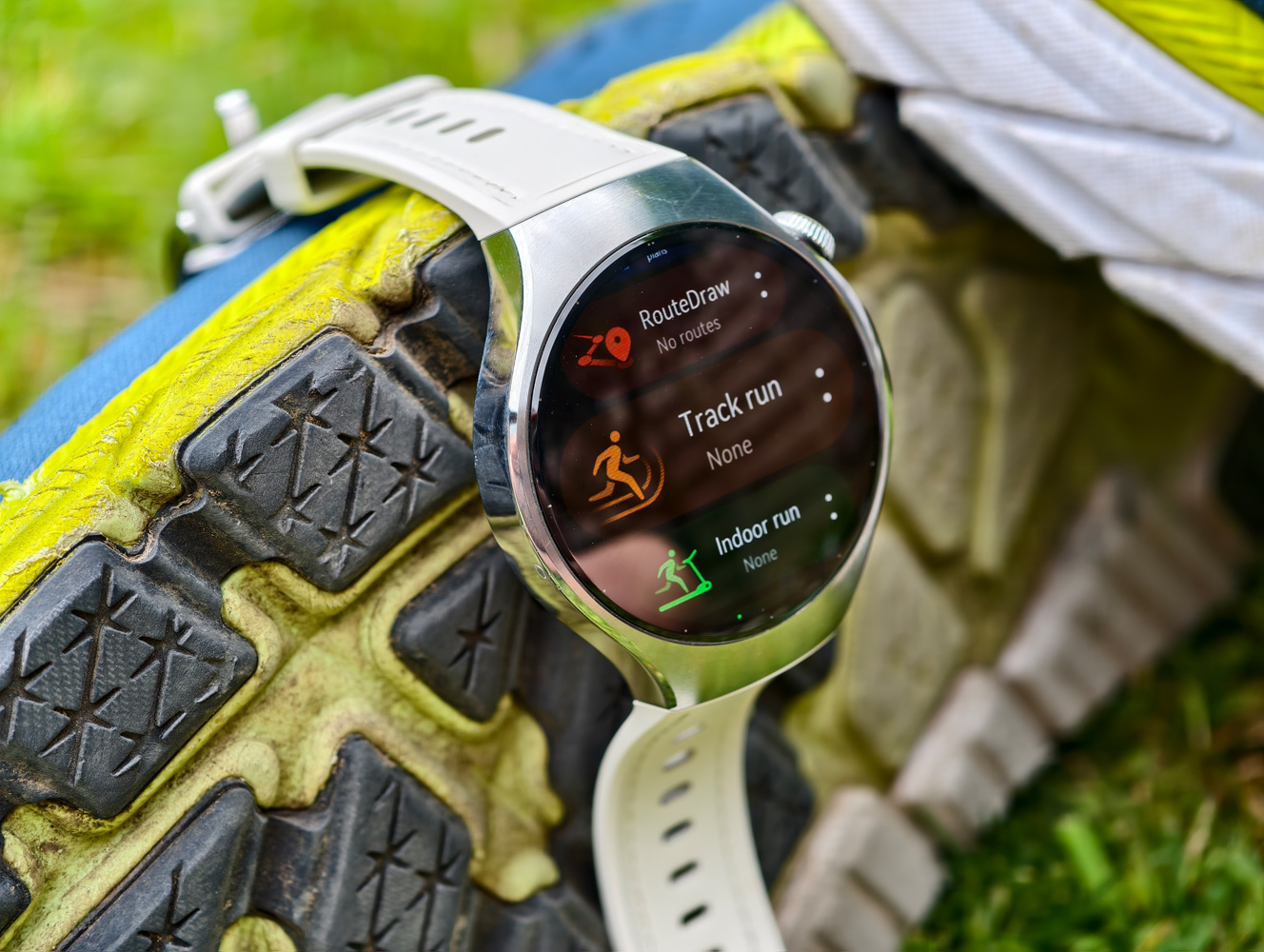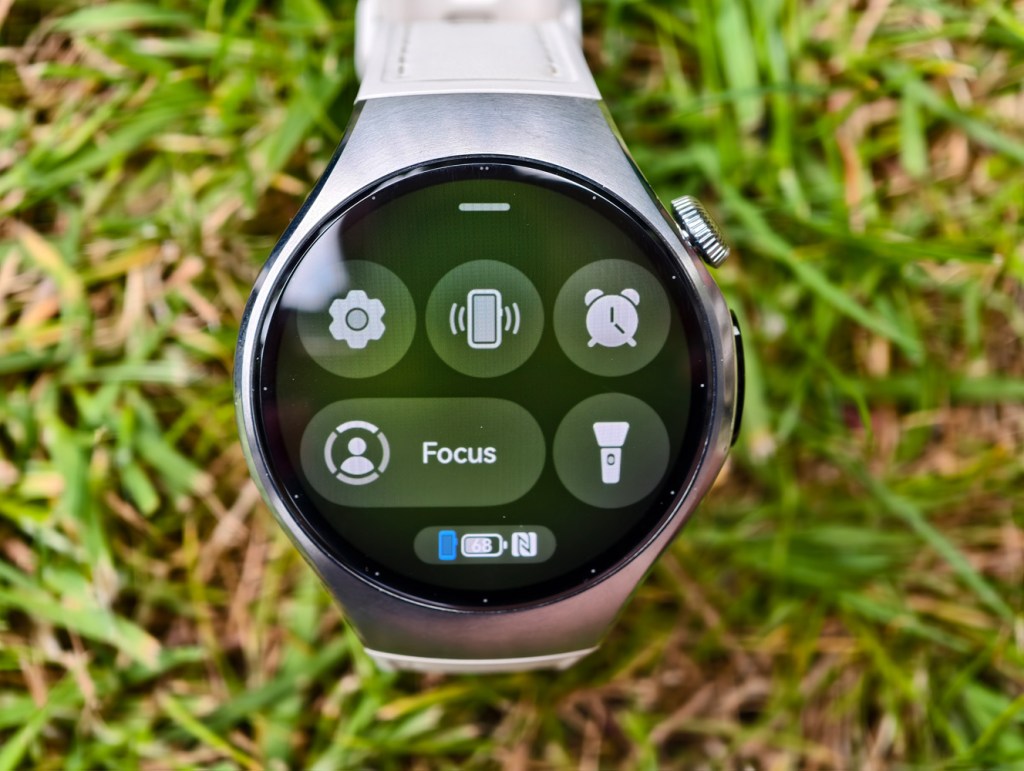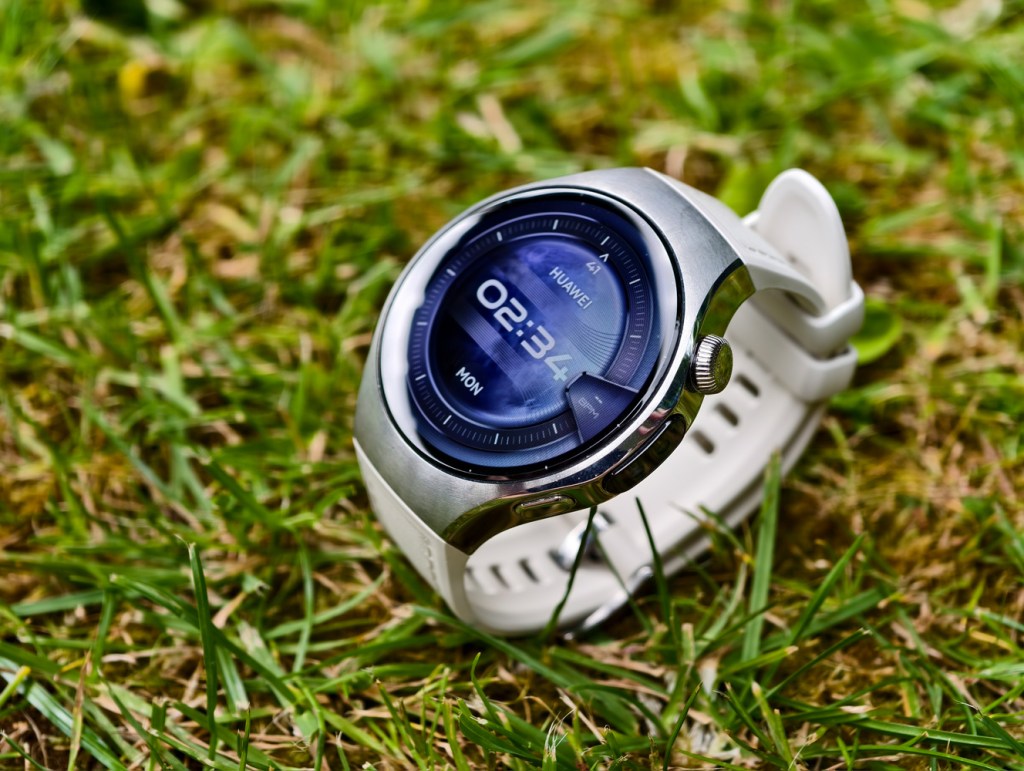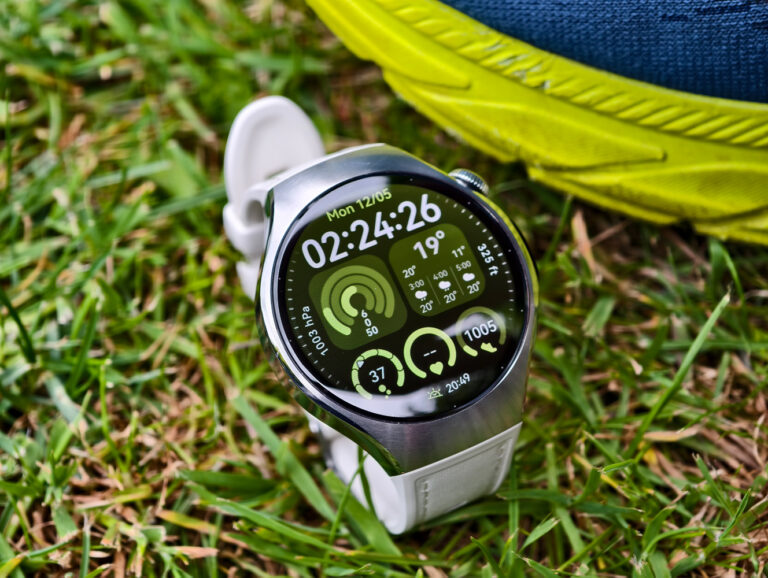Introduction
Huawei’s wearable division has been on top form lately, with one of the most varied smartwatch selections going. There’s something for everyone: some models are inspired by classic timepiece, while others look closer to chunky chronographs. The more minimal Watch 5 sits somewhere in the middle, and is the firm’s most workout-friendly wearable yet.
It now packs so much health-focused hardware that the sensors have spilled out to the side of the case, promising faster and more accurate measurements when using your fingertip as well as your wrist. A long-lasting battery and compatibility with both Android and iOS phones add to the appeal.
In Huawei’s native China the Watch 5 is as fully-featured as wearables get; in the West, things are a little more complicated, with more limited app support. That puts this £399 wearable on the back foot compared to the cheaper Google Pixel Watch 3 and Samsung Galaxy Watch 7. But after wearing one for a few weeks, I’m convinced there’s still plenty here to like – particularly if you’re into your fitness.
Design & build: subtle, not simple
Huawei has taken a break from its usual practice of having its watch variants look drastically different; whether you go for the smaller 42mm version or larger 46mm model, the Watch 5’s general styling is very consistent. The all-metal chassis is delightfully minimal, looking more like a mainstream timepiece than a fitness-focused wearable. It doesn’t go big on the bezel like the Watch GT 5, either.
The biggest flourish is the knurled finish on the digital crown, which – along with a shortcut button that lets you quickly jump into the multitude of exercise modes – flanks the new health sensor on the right side of the watch.
It’s not like the range is short on colour and strap variety, though. The Beige and Sand Gold 42mm models are arguably more feminine, with rose gold cases made from 904L stainless steel and matching leather strap or metal link bracelet. Go big with the 46mm Watch 5 and you’ve got a choice of black stainless steel, or aerospace-grade titanium in brown, silver and purple.
My 42mm review unit had a more gender-neutral 316L stainless steel case and white, leather-effect fluoroelastomer (ie rubber) strap. It was comfy for exercise as well as daily wear. Quick release lugs make it easy to swap out the stock strap for a third-party band or bracelet.
I normally wear a larger smartwatch at night, so had no trouble sleeping with the Watch 5 on my wrist. It doesn’t feel at all heavy, and sits more flush to your wrist than many recent Android Wear rivals, so easily slips under a shirt sleeve.
As you’d expect, the Huawei Watch 5 can survive all manner of harsh conditions, and is fine to wear underwater. There’s even a diving mode.
Screen: a glass act
I normally prefer a large smartwatch screen, but the Huawei Watch 5’s 1.3in AMOLED makes up for its smaller stature with a wonderfully sharp 466×466 resolution panel. I could clearly make out even small fonts and tiny watch face complications at arm’s length, and colours looked wonderfully vibrant.
Viewing angles are faultless, as you’d expect from OLED, and the 82.5% screen-to-body ratio is a big leap from the previous generation.
The slim outer rim has subtle hour markers, which cleverly hide the panel bezel for a particularly streamlined look. When using an always-on watch face, a few friends mistook it for an analogue timepiece. LTPO 2.0 tech helps keep power consumption low when using always-on, though you’re still losing around a day of wear between charges by enabling it.
With a peak 3000 nits brightness, it shines brighter than the outgoing model and matches both the Apple Watch Ultra 2 and Samsung Galaxy Watch Ultra. It won’t pump out that much light all the time, but I had no issues reading the screen clearly on the sunniest of sunny days.
Interface: sweet harmony
Huawei’s HarmonyOS interface was already pretty slick, with colourful, information-dense apps that really make the most of the high resolution screens and impressively smooth animations. The Watch 5’s vertical grid-based app launcher is a little better at preventing information overload than the checkerboard one found on older models, but the UI otherwise feels very familiar.
Notifications and quick settings are still accessed with up and downward swipes; a stack of quick cards showing weather, calendar and music controls life to the left of the main watch face; and more customisable cards filled with widgets and app shortcuts sit to the right of it. These are great for putting a bunch of different health metrics on a single screen, without cluttering up the main watch face.
The majority of the pre-installed apps are fitness-focused, and you’ve got to grant permissions for each of them separately, which is a faff. That’s not to say the Watch 5 is short on smarts, though: it has everything you’d expect, syncing weather reports and calendar appointments with your phone, letting you control its music playback and camera shutter remotely, and answer incoming calls from your wrist.
Contactless payments rely on Huawei Wallet, which isn’t available in every country, and while the Watch 5 has an App Gallery, there’s very little here worth installing. The Huawei Health phone app can spit your exercise sessions out to services like Strava via your phone, but you’re not getting them on the watch yourself. Wear OS and Apple Watch OS remain leagues ahead for third-party support. Functionality is also slightly more limited when paired to an iPhone, though the fact you can do it at all is a win, and the companion app is easier to install than it is on Android.
Health & fitness: seeing sense

Pretty much every fitness-focused smartwatch can track your steps, heart rate and stress levels; the better ones also periodically monitor skin temperature and blood oxygen levels, perform ECG readings and check for arterial stiffness. The Huawei Watch 5’s new X-Tap tech adds a pressure-sensitive electrode to the side of the watch body, for real-time measurements.
Placing a fingertip on the sensor for 60 seconds also generates a comprehensive nine-point health report, including a new heart rate variability score. It’s about as comprehensive as non-medical fitness watches get, and the one-tap ease of use meant I was much more likely to run the checkup on the regular than if I was forced to jump in and out of different apps. I found the sensor placement that much more comfortable to reach than the OnePlus Watch 3‘s, too.
With no early signs of heart arrhythmia or atrial fibrillation, I set about testing the comprehensive sport and exercise tracking modes. The Watch 5 was faster than my high-end bike computer to secure a GPS lock, and I can’t fault its tracking accuracy. Step count, heart rate and distance measurements were consistent, both during exercise and in daily use. I’d easily put it on par with other top-tier smartwatches.
I barely made a dent in the 100 or so different activity modes, which include things as varied as frisbee and belly dancing. It can automatically detect running, walking, rowing and cross trainer workouts, which is less advanced than some rival wearables, and the walking detection didn’t always kick in when I expected it to. Still, my mix of hiking, indoor swimming, road cycling and exercise bike workouts were tracked comprehensively, and the Huawei Health app spat them all out to my Strava account correctly.
Battery life: working week

Battery life has never been a Wear OS or Apple Watch OS strong point; even longevity champs like the OnePlus Watch 3 will run flat after five days, while most can only manage two or three. Huawei, on the other hand, routinely manages up to 7 days per charge, depending on size.
The Watch 5 duly delivers, with my 42mm review unit reaching a third day before it needed a trip to its magnetic charging puck. That included an hour of GPS-tracked cycling each day, with each trip knocking around 5% off the remaining charge. Admittedly I avoided using the always-on display mode, instead sticking with raise-to-wake, but otherwise used it as frequently as any other smartwatch. Short of a dedicated sports watch or fitness band, you’ll struggle to go longer between charges.
The 46mm model is worth plumping for if you want to go longer; Huawei rates it for 4.5 days, or 11 if you use the ultra-long battery life mode, which limits functionality in order to stay fuelled for longer.
I was a little surprised Huawei still hasn’t made the switch to a type-C charging cable. The USB type-A connector felt old hat on 2023’s Watch GT 4; most rivals now have type-C as standard. The magnetic puck at the other end holds the watch in place firmly, though, so I never worried about it slipping off. An hour will usually fully refuel the watch.
Huawei Watch 5 verdict

Do you feel strongly that apps belong on your phone, not your wrist, and that smartwatches should just focus on fitness? You’ll be bright at home with the Huawei Watch 5. It’s a sharp-looking wearable with enough smarts to get by on its lonesome, and a seriously comprehensive set of fitness features.
Western buyers will need to accept a few limitations compared to the Wear OS and Apple Watch alternatives, and iOS owners are even more restricted on features, but it still does the smartwatch essentials well. Android users will appreciate extra functionality like on-device music, though they’ll find the OnePlus Watch 3 just a teensy bit easier to set up – and longer-lasting, too.
Phone notifications, weather updates and music controls are all I really need on a smartwatch beyond fitness tracking, and fitness tracking is something the Huawei Watch 5 does very well indeed.
Huawei Watch 5 technical specifications
| Screen | 1.3in, 466×466 AMOLED |
| Sensors | Accelerometer, gyroscope, magnetometer, optical heart rate sensor, barometer, temperature sensor |
| Connectivity | eSIM, GPS, Bluetooth, NFC (country-dependent) |
| Software | Huawei Harmony OS |
| Battery | 3 days (42mm) 4.5 days (46mm) typical use |
| Durability | IP68, 5ATM |
| Dimensions | not stated |
Read the full article here
